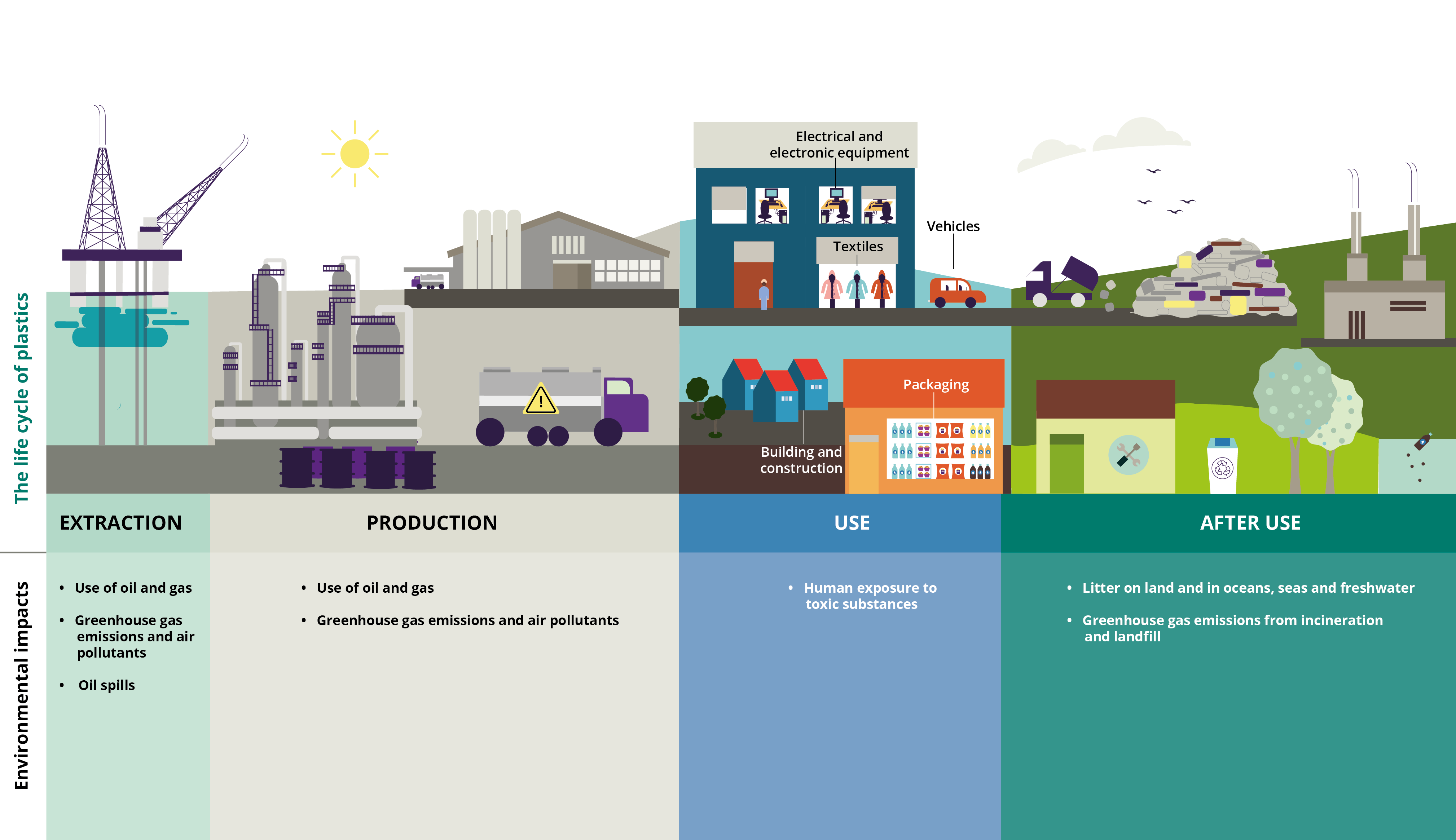The COVID-19 pandemic has only increased the attention for plastic waste with images of masks in our seas, and large amounts of single-use protective gear. In the circular plastics economy report, published today, the European Environment Agency (EEA) analyses the need and potential for a shift to a circular and sustainable approach to our use of plastics.
While awareness, concern and action over how we dispose of plastics in the marine environment and elsewhere have grown enormously in recent years, there are many other and less known impacts of plastics, including its contribution to climate change and new challenges related to the COVID-19 pandemic, according to the EEA report ‘Plastics, the circular economy and Europe′s environment — A priority for action’.
The report looks at plastics production, consumption and trade, the environmental and climate impact of plastics during their life cycle and explores the transition towards a circular plastics economy through three pathways involving policymakers, industry and consumers.
“The challenges posed by plastics are to a large extent due to the fact that our production and consumption systems are not sustainable. The COVID-19 pandemic and climate change have amplified public attention for the plastic waste crisis we face. It is clear that the best way is to shift to a fundamentally sustainable and circular plastics economy, where we use plastics much more wisely and better reuse and recycle them. Moreover, producing plastics from renewable raw materials should be the starting point” said Hans Bruyninckx, EEA Executive Director.
The report shows that the production, use and trade of plastics continue to grow. An increasing number of EU policies and initiatives are already in place to address the challenges posed by plastics, in particular those posed by single use plastics. In 2018, the European Commission presented the world’s first comprehensive Strategy on plastics in a circular economy, which lays out the EU’s approach to addressing the challenges of plastics, followed by the Single-Use Plastics Directive in 2019.
The EEA report points to three pathways for the way ahead including smarter use of plastics, increased circularity, and use of renewable raw materials. Together these can help ensure we achieve a sustainable and circular plastics system. Alongside the report, two related briefings on plastics and textiles and on enabling circular business models are also published today.
COVID-19 pandemic and plastics
The coronavirus pandemic has caused changes in the production, consumption and waste of plastics. Plastic masks play a vital role in limiting the further spread of COVID-19. But the surge in plastic waste due to the demand for masks and gloves, plus changed production and use of single use plastics products like food take-away containers and plastic packaging for online sales can jeopardise EU efforts in the short term to curb plastic pollution and move to a more sustainable and circular plastics system.
Industry’s plastics production adding to climate change
The consumption and production of plastics involves the use of large quantities of fossil fuels, which has negative implications for the environment and climate change. Adding to the problem, reduced economic activity has seen sharp falls in global oil prices making it significantly cheaper for manufacturers to produce plastic goods from virgin, fossil-based materials than to use recycled plastic materials. If the production and use of plastics continue to increase as projected, the plastic industry will account for 20 % of global oil use by 2050, an increase from today’s 7 %.
Data from the EEA’s Greenhouse Gas Inventory shows that annual emissions related to plastic production in the EU amount to around 13.4 million tonnes of CO2, or about 20 % of the chemicals industry’s emissions EU-wide, the report says. The economic viability of the European and global plastics recycling market is currently under significant pressure. Lower market demand for recycled plastics has also complicated the efforts of many of Europe’s municipalities to manage their waste practices sustainably, and less desirable waste disposal options are being used for significant quantities of plastic waste.
Synthetic textiles a growing problem
A part of the plastics problem is textiles made from synthetic fibres such as polyester and nylon. According to a separate EEA briefing which looks at plastics in textiles, consumers in the EU discard about 5.8 million tonnes of textiles annually — around 11 kilograms per person — of which about two thirds consist of synthetic fibres. According to data available from 2017, European households consumed about 13 million tonnes of textile products (clothing, footwear and household textiles). Plastic-based textiles make up about 60 % of clothing and 70 % of household textiles. Promoting sustainable fibre choices and control of microplastic emissions, and improving separate collection, reuse and recycling, have the potential to improve the sustainability and circularity of synthetic textiles in a circular economy.
Circular business models can help tackle the unsustainable production and consumption of plastics
There are increased interest and gainful opportunities in changing traditional business models to make them more circular, enabling materials and products to be reused and to remain in the economy for as long as possible. An EEA briefing ‘A framework for enabling circular business models in Europe,’ also released today, identifies the actions that can be taken to implement circular business models effectively. It also identifies enablers to upscale them on a wide scale as part of the expected shift to a circular economy. Such a transition will require that the right supportive policies are in place and behaviours that lead to change in consumption and education.









